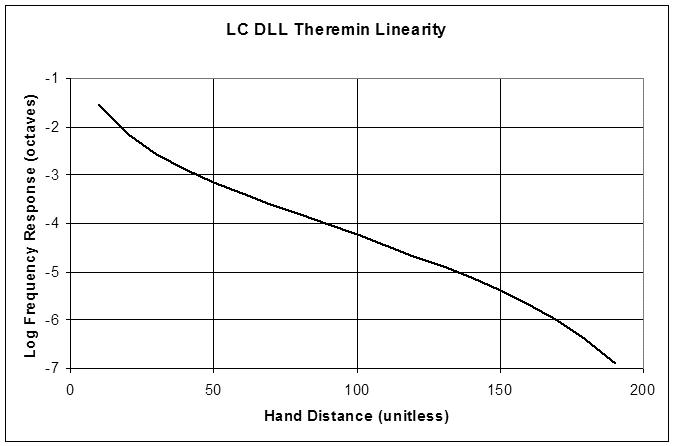"I believe this only applies to designs that have linearizing coils that are quite a bit larger (i.e. quite a bit more inductance) than the tank coil" - Dewster
Bingo! - And the only effective linearizing coils (at least in "normal" theremin designs) are ones which are much larger than the tank coil/s - it is the increased inductance of the linearizing coils which enables "amplification" of the sensitivity to the tiny changes in antenna capacitance - this "amplification" is compensated (partly counteracted) by having much smaller tank inductance and much larger tank capacitance..
The smaller tank inductance with large tank capacitance makes the oscillator quite insensitive to capacitance changes, but quite sensitive to inductance changes.. This sensitivity to inductance changes allows the "virtual" inductance applied due to the changing resonant frequency of the antenna resonant circuit, to have a major effect on the oscillator frequency.
As this "virtual" inductance change has a different law to the law governing the antenna capacitance change, when "right", one gets a linearized response.
So my little speach above applies to conventional theremin equalizing - and I think applies to Lev's theremin designs, albeit I suspect the Lev oscillator obtains a somewhat different interaction due to its topology (my untested hypothesis)..
But the above is not the only way to obtain linearization - For me, the real irony of all this is that I spent years playing with a "different way" - and achieved it - an analogue circuit monitors the VFO frequency, converts this frequency to a voltage, and a processed version of this is fed to control the equalizing inductance using saturable reactance ...
I know you have been playing with a different topology as well -
To me, the profound irony is that, IF we have discovered the Lev linearity secret, we may well have discovered it a few decades too late to make best use of it - Our technology and understanding may have now caught up with where Lev was in the early 30's ! -- And we may well be able to achieve better linearity than he did, using our present technology.
Oh - I may be completely wrong about Lev's oscillator - I would be dissapointed if I was wrong, because that would mean that the expierience of "getting inside Lev's head" would have been an illusion.. And "cracking" this "mystery" has been something of a high point for me.. But if it turns out to be "just another oscillator" well, I can live with that! ;-)
But I dont think it is! ;-) .. The Armstrong oscillator was perfectly capable of operating with tubes (it was designed for tubes) and Lev could have implemented the equivalent of our parallel LC theremins using the conventional Armstrong oscillator more simply than the oscillator he designed -
I think Lev deliberately split the inductances and implemented series LC configuration because this conferred great advantage for his theremin application.
Fred.


